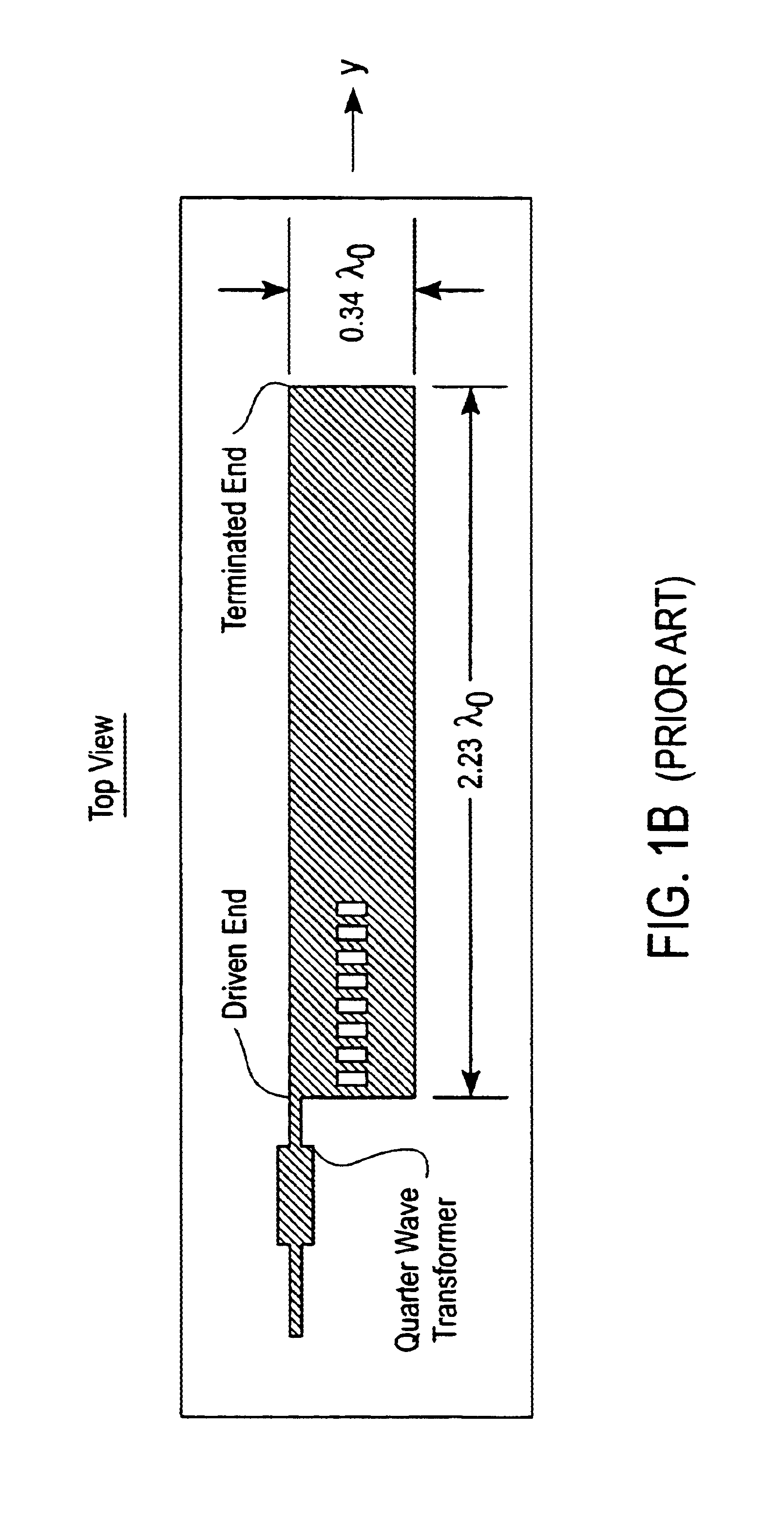Leaky wave microstrip antenna with a prescribable pattern
a microstrip antenna and prescribable technology, applied in the direction of leaky waveguide antennas, antenna details, antennas, etc., can solve the problems of spurious radiation and ohmic loss of microstrip antenna arrays
- Summary
- Abstract
- Description
- Claims
- Application Information
AI Technical Summary
Benefits of technology
Problems solved by technology
Method used
Image
Examples
Embodiment Construction
An amplitude distribution may be prescribed to a leaky-wave antenna having a periodical radiator cell structure. This distribution requires that the antenna possess a variable leakage-constant profile along its length, and is chosen so as to yield an H-plane power-gain pattern having low sidelobes. The leakage-constant profile is achieved by configuring the width and length of the antenna radiating cells while keeping the phase constant fixed. The length or loading of the radiating cells may also be manipulated to achieve the desired leakage constant profile. This results in the desired amplitude distribution along the antenna's aperture and yields a low-sidelobe power-gain pattern. The antenna is excited by two equal-amplitude and 180° out-of-phase signals. These signals are applied to the feed end of the microstrip at two feeding ports. The microstrip antenna length is chosen such that more than 97% of the input power is radiated by the traveling electromagnetic wave, while the re...
PUM
 Login to View More
Login to View More Abstract
Description
Claims
Application Information
 Login to View More
Login to View More - R&D
- Intellectual Property
- Life Sciences
- Materials
- Tech Scout
- Unparalleled Data Quality
- Higher Quality Content
- 60% Fewer Hallucinations
Browse by: Latest US Patents, China's latest patents, Technical Efficacy Thesaurus, Application Domain, Technology Topic, Popular Technical Reports.
© 2025 PatSnap. All rights reserved.Legal|Privacy policy|Modern Slavery Act Transparency Statement|Sitemap|About US| Contact US: help@patsnap.com



